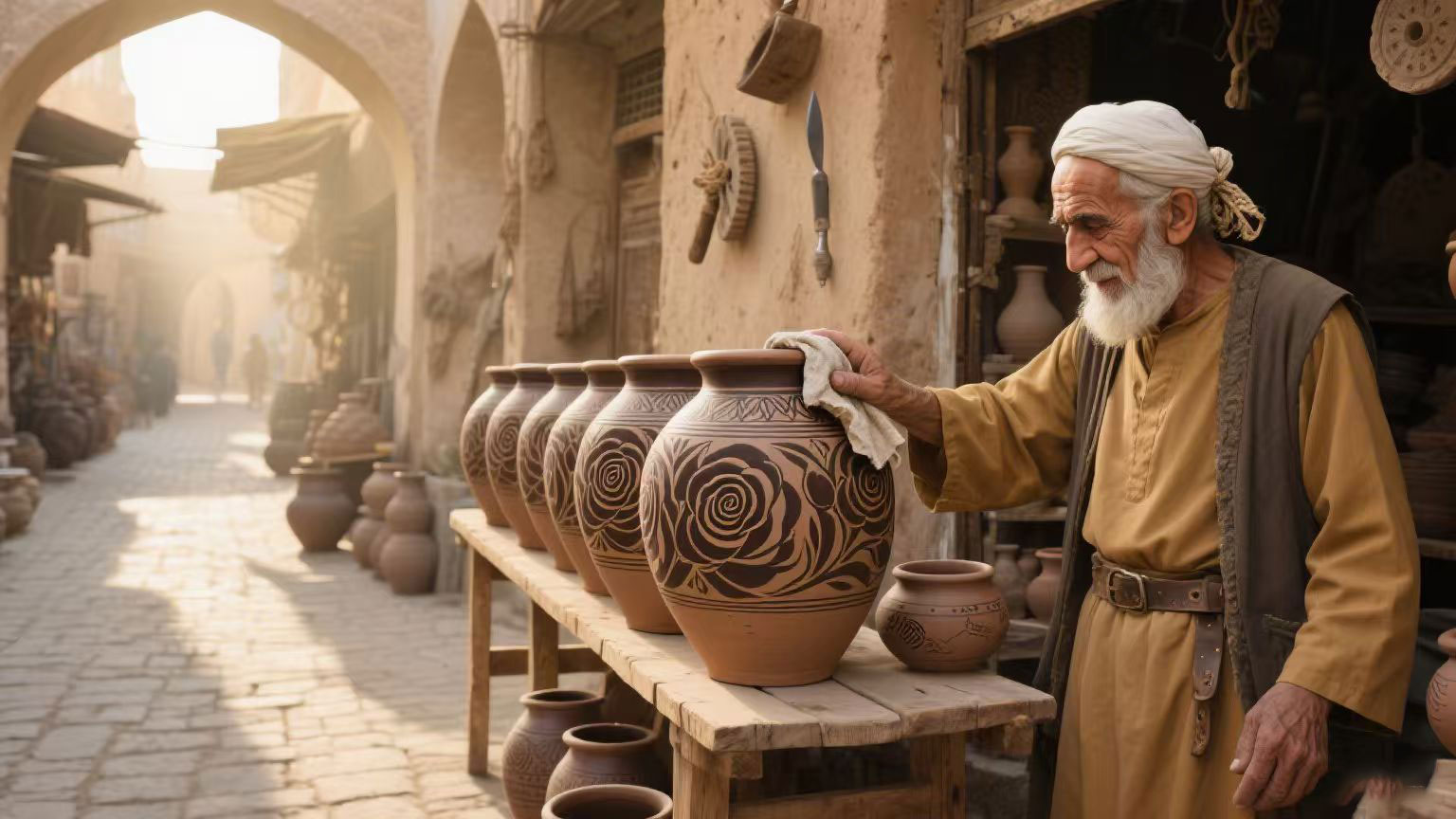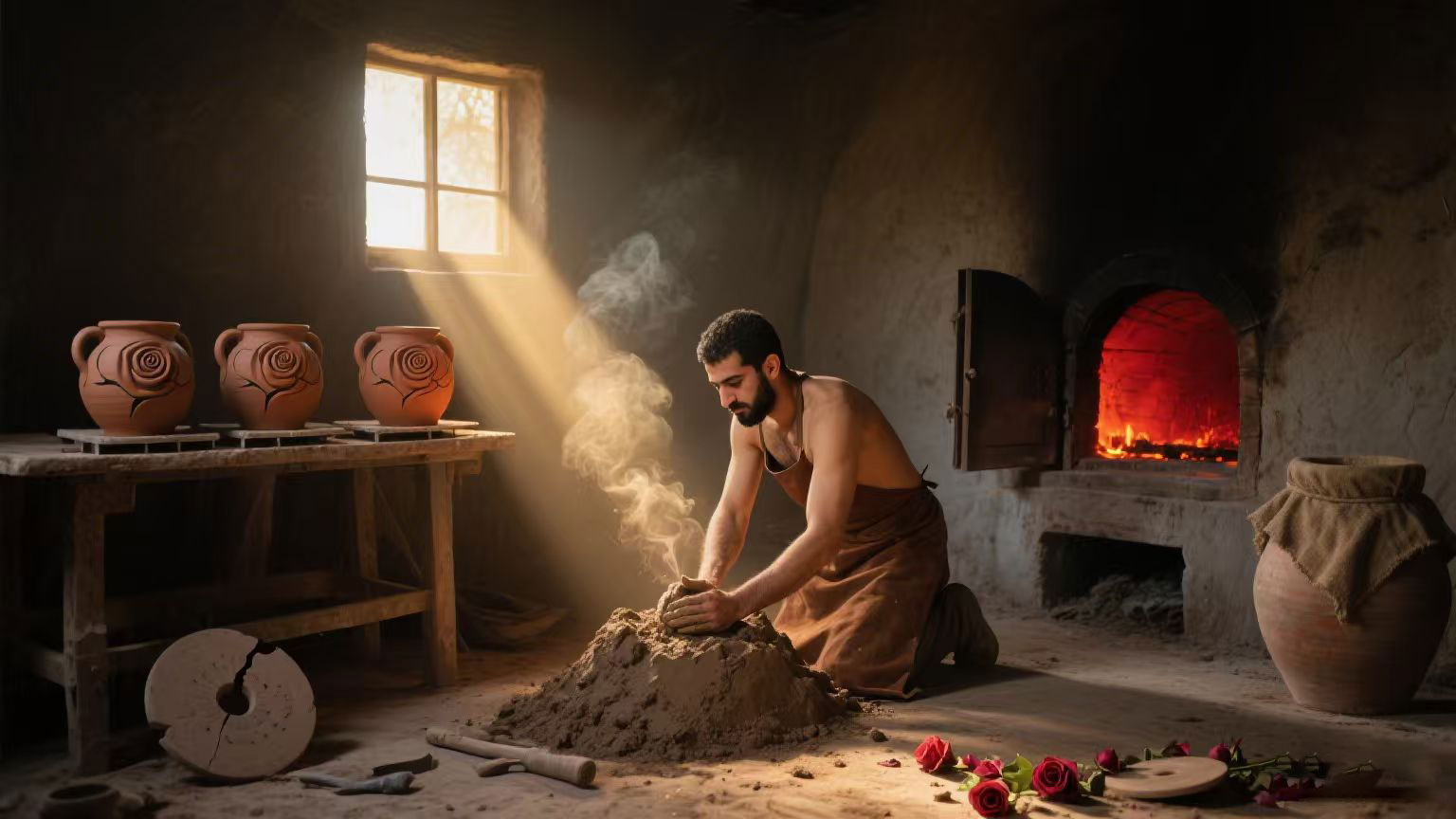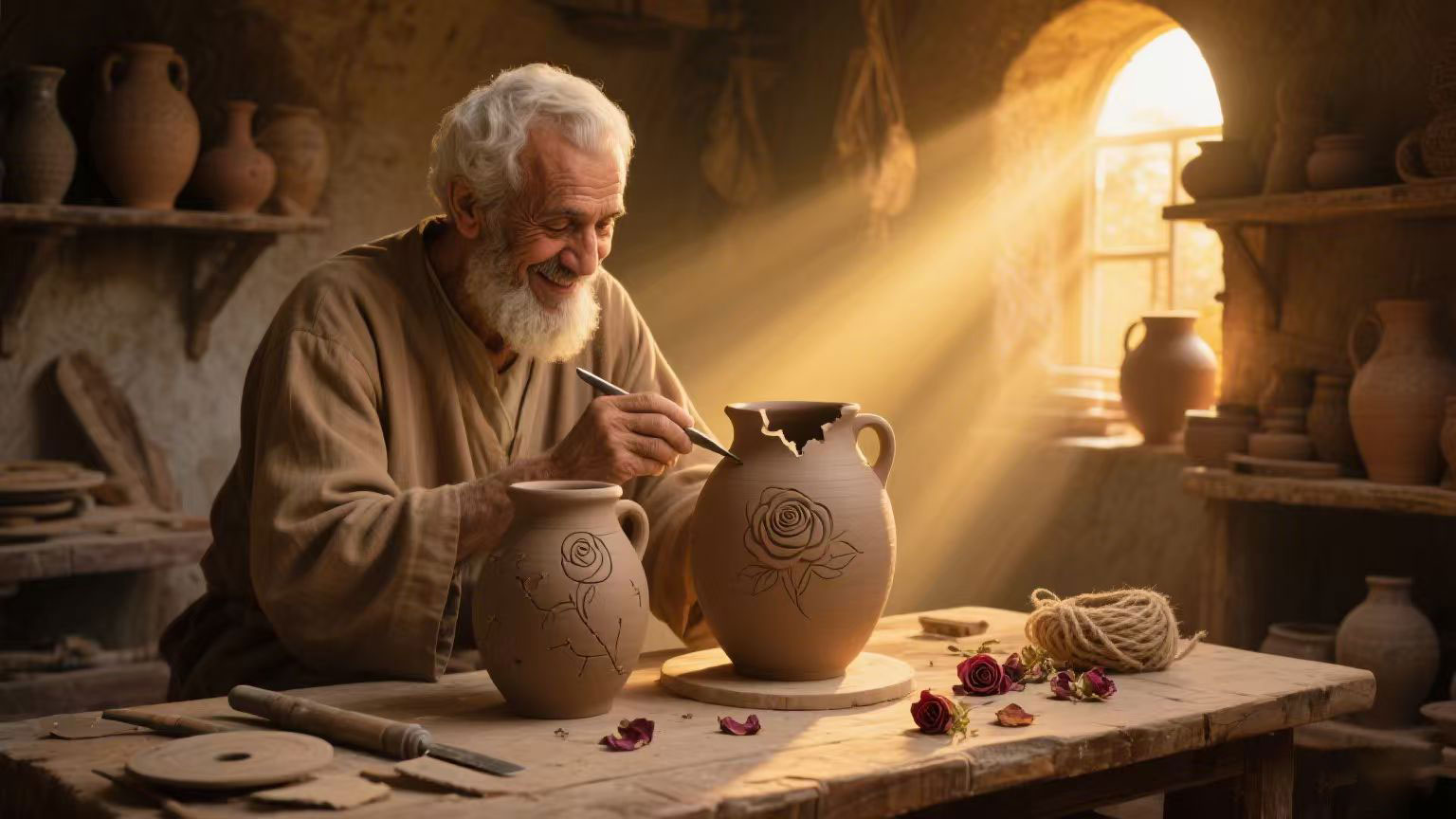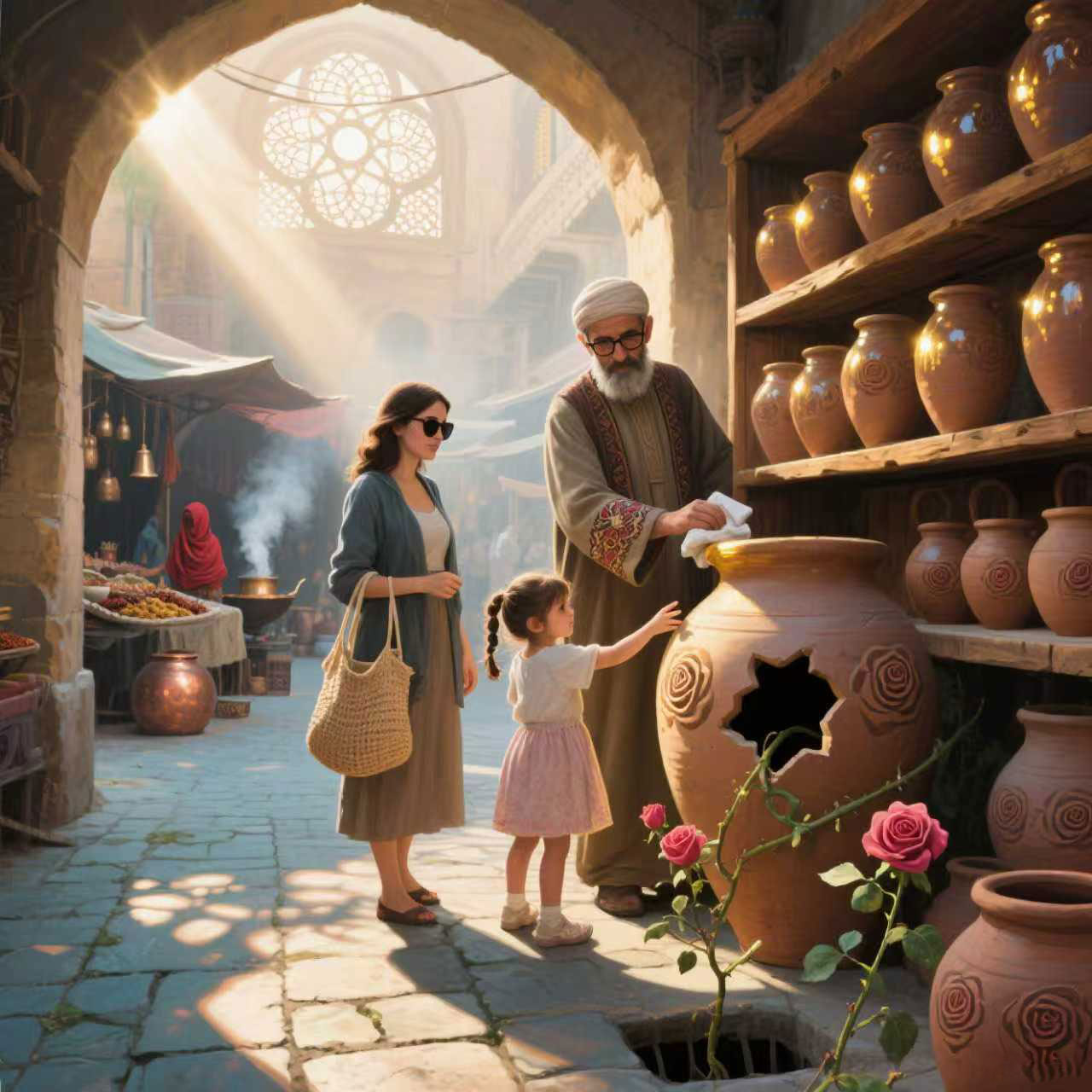+86-13516938893
Menu
global purchase
Deep in the pottery market of ancient Kashan, Iran, lived an elderly potter named Hassan. In front of his shop stood a row of unusual clay jars—their surfaces covered in delicate rose patterns, yet their rims intentionally left with irregular notches, as if nibbled by time. Locals said these jars held "sunlight that could sprout," and behind them lay a promise spanning thirty years.

In his youth, Hassan was an impatient craftsman. He disliked that traditional rose-patterned pottery took too long to fire, obsessed with creating a "miracle jar" that would amaze the king. At twenty-five, he got lost in the desert and stumbled upon the ruins of a rose garden buried in sand. In the center of the ruins sat a blind old woman, her gnarled fingers brushing broken flower stems. "Child," she said, hearing his footsteps, offering him half a dry rose cake, "this garden was once the most beautiful in Persia, until locusts devoured everything ten years ago."
Hassan watched as the old woman fumbled in her bosom and pulled out a clay jar, inside which lay the last handful of rose seeds. "Since I lost my sight, I’ve remembered their shape by touching petals," she pressed the jar into his hands. "They say a true potter can make clay remember the warmth of sunlight. Will you fire a jar to keep these seeds through winter? When spring comes, plant them back in this soil." Staring at the faint rose carvings on her jar, Hassan suddenly recalled his mother’s words: Genuine pottery breathes, holding the breath of life.
Back at his workshop, Hassan abandoned flashy techniques, kneading plain clay over and over. He locked himself in the kiln room, mimicking the old woman’s petal-touching gestures to carve patterns—deep grooves for stems’ tenacity, shallow lines for petals’ softness. When firing, he deliberately dimmed the kiln’s final flames, leaving a trace of "unextinguished warmth," like the desert sun’s lingering heat at night. When the jar emerged, its rim had naturally cracked into a notch. "A breathing hole for the seeds," he smiled, remembering her words.
He returned to the ruins, but the old woman was gone, leaving only a rose-embroidered shawl. Hassan buried the seeds in his jar, placed it on a stone pedestal, and walked two hours daily to water it. That winter came early; fearing the seeds would freeze, he kept the jar close to his chest, until the clay’s cold left red rashes on his skin. In spring, the first sprout poked through the rim’s notch—and Hassan wept to see its shape mirrored the carvings on the jar.
Thirty years passed, and the ruins bloomed into a rose valley. Hassan’s pottery became legendary in Kashan: his rose-patterned jars, unglazed yet always faintly scented, bore the signature notch. When offered a fortune for the "seed jar," he shook his head: "It has fulfilled its purpose." Today, the oldest rose bush in the valley still clings to a shard of clay—the jar’s weathered remains.
Last spring, a girl with glasses entered his shop, holding a patched old jar. "My grandmother said a young man once promised to guard her rose seeds," she said, eyes tearful. "She said a good potter’s promise is worth more than gold, and made me return this." Hassan stared at the familiar carvings—this was the old woman’s jar. The girl was her granddaughter.

Sunlight streamed through the workshop window, illuminating two jars: one from a grandmother, one from a potter. Hassan picked up his carving knife, making the first light stroke on a new clay slab. He finally understood: the "miracle jar" was never a treasure to awe kings, but a vessel to hold promises and hope. Like those seeds that survived winter in clay, true life is never forgotten—it only blooms more beautifully with time.

Now, young people in Kashan know to choose Hassan’s rose jars with notches. In that notch lies the warmth of sunlight, a potter’s pact with the land, and the most cherished Iranian virtue: with patience and perseverance, every promise takes root and grows.